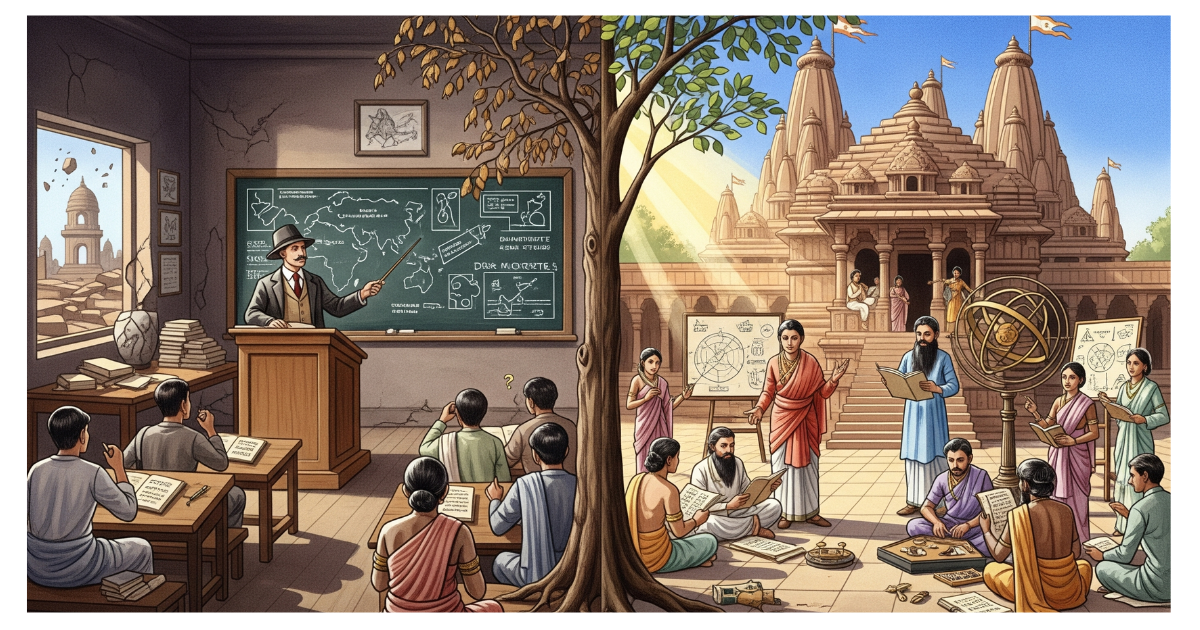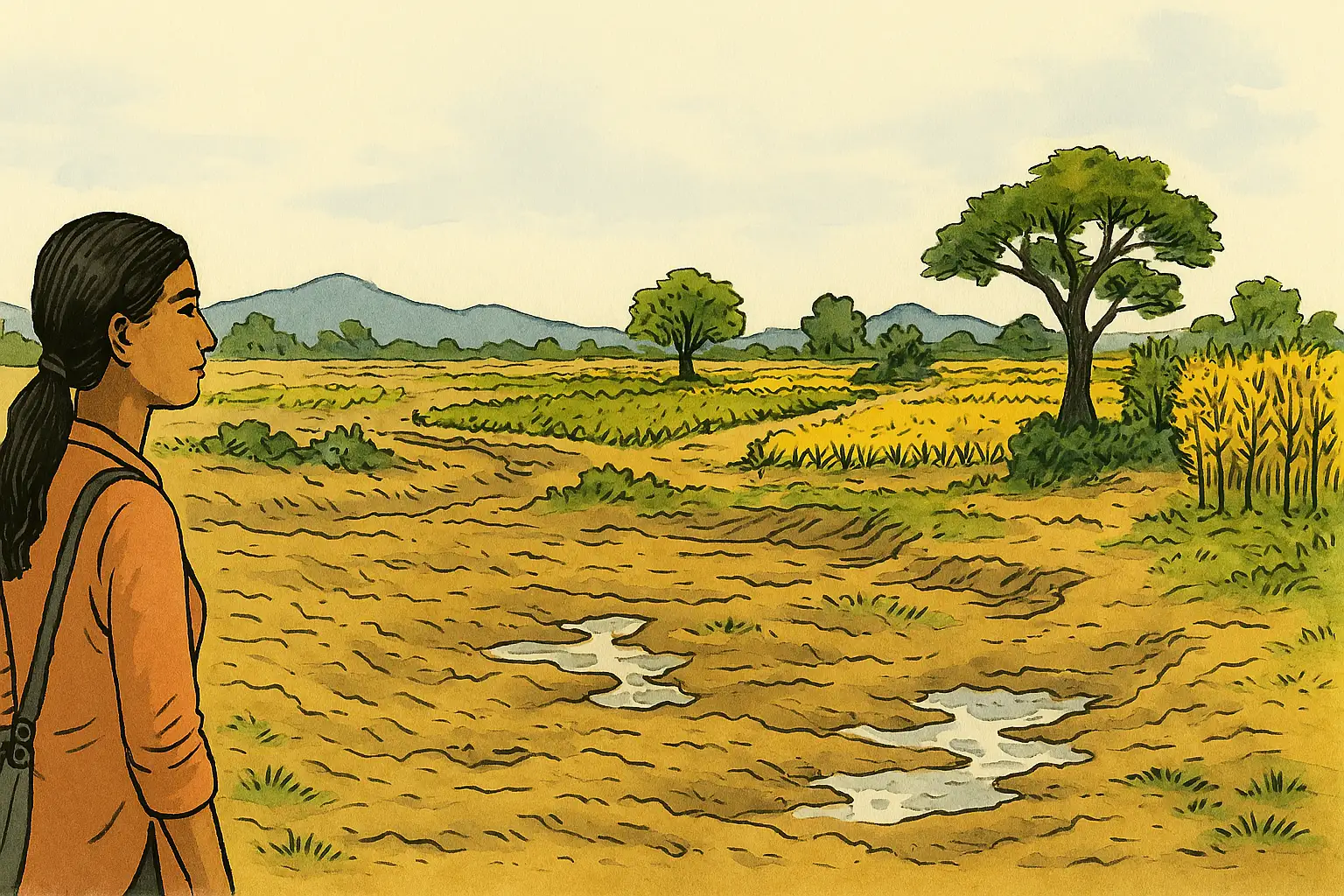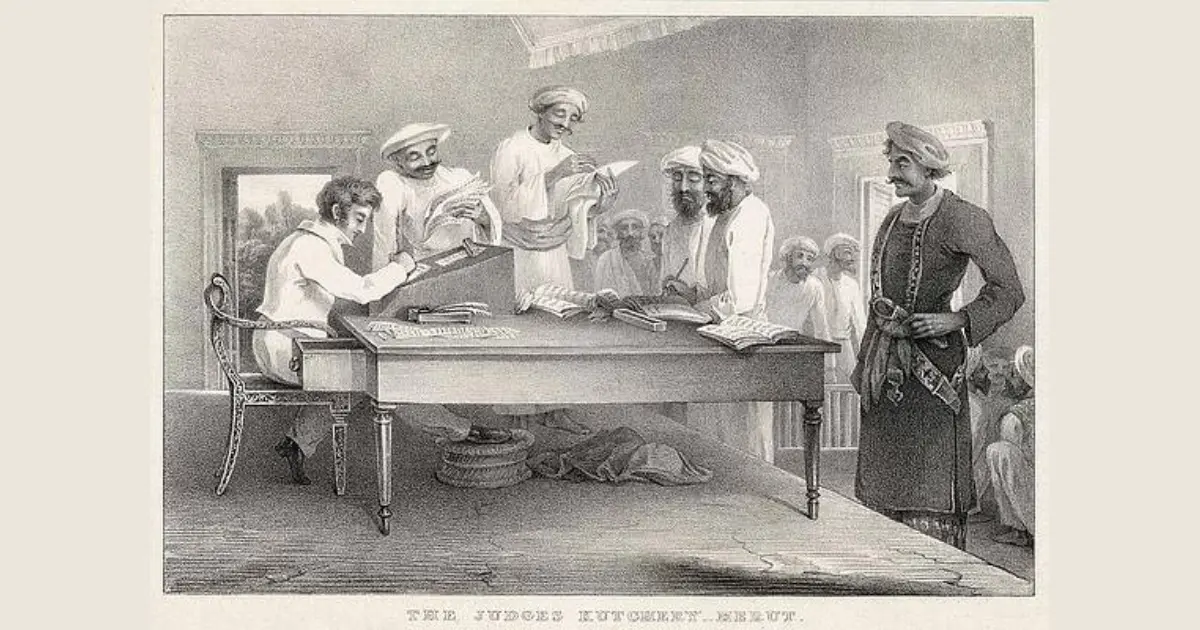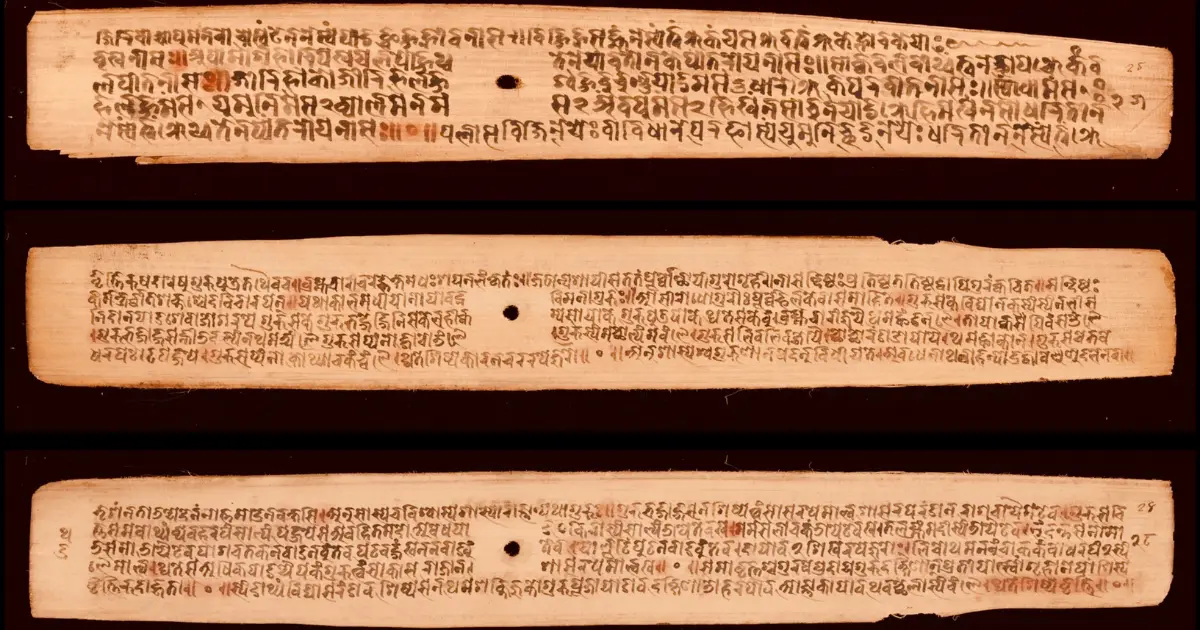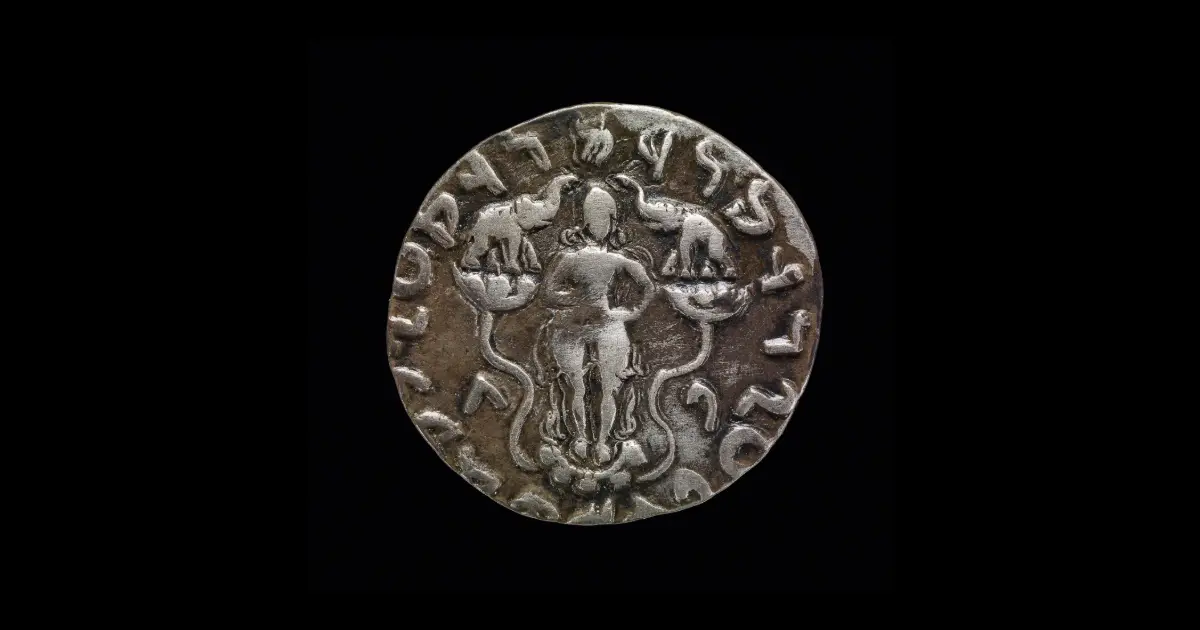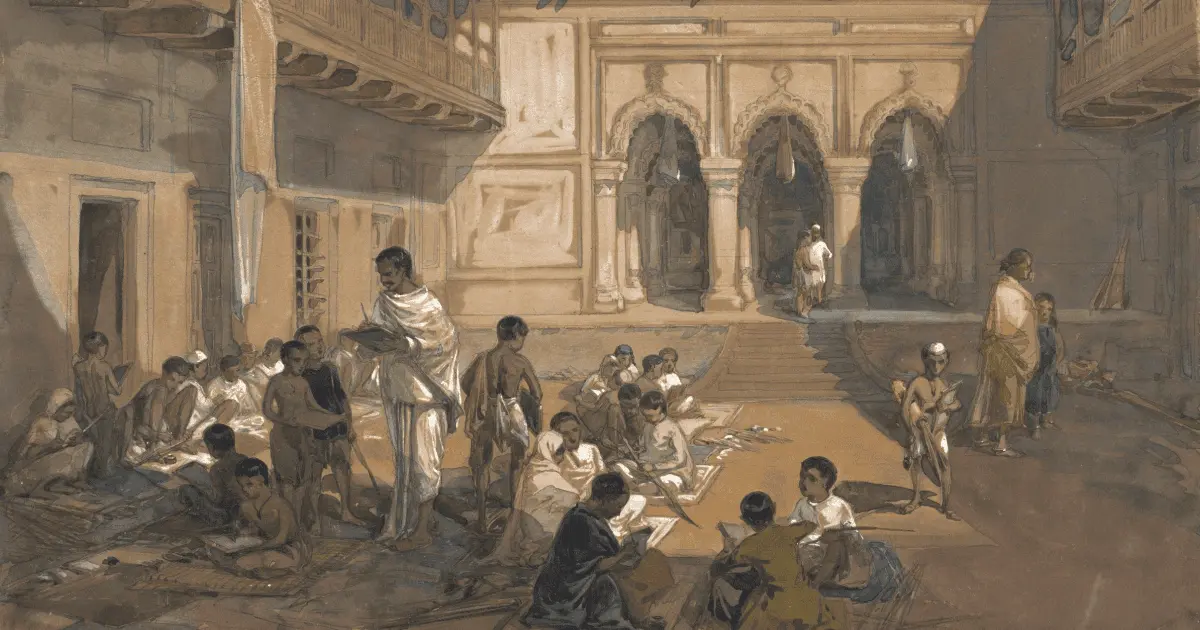I would not care whether truth is pleasant or unpleasant, and in consonance with or opposed to current views. I would not mind in the least whether the truth is or is not a blow to the glory of my country. If necessary, I shall bear in patience the ridicule and slander of friends and society for the sake of preaching truth. But still I shall seek truth, understand truth, and accept truth. This should be the firm resolve of a historian.
Sir Jadunath Sarkar
Sir Jadunath Sarkar, one of the towering figures in Indian historiography, exemplified an empirical and Rankean approach to history. Emphasizing facts, objectivity, and rigorous source analysis. Yet, even he acknowledged the profound essence and ethos of a historian's work, which transcends mere empiricism to capture the soul of a nation's past. This perspective resonates deeply in the ongoing debate over India's educational narratives, particularly with the recent revisions to NCERT textbooks. These changes prompt a critical question: Do they represent a distortion of history through ideological bias, often labeled as saffronization, or a necessary decolonization that restores the authentic story of Bhārat and the idea of Bhāratīyatā?
In light of the latest updates to the Class 8 Social Science textbooks by the National Council of Educational Research and Training (NCERT), a fresh lens has been applied to Indian history from the 13th to 17th centuries. Titled Exploring Society: India and Beyond, this book marks the first in a new series to delve into the Delhi Sultanate and Mughal periods for young learners. These revisions aim to provide a more nuanced view, potentially addressing long-standing criticisms of previous editions. Proponents argue that the updates correct imbalances, while detractors see them as politically motivated alterations.
The old NCERT textbooks, spanning Classes 6 to 12, were never accused of such a blame even though all they did was perpetuating a liberal Marxist interpretation of history—one that, in its purported honesty, may have misled impressionable children by embedding propaganda, distorted truths, and biases against India's cultural, religious, social, and linguistic heritage. This framework often portrays historical events through a lens of class struggle and colonialism, sometimes at the expense of indigenous perspectives and achievements.
To evaluate whether these changes signify distortion or decolonisation, let us examine comparative examples that highlight shifts in how Indian history is relayed. These contrasts reveal potential moves toward a more balanced, Bharat-centric view.
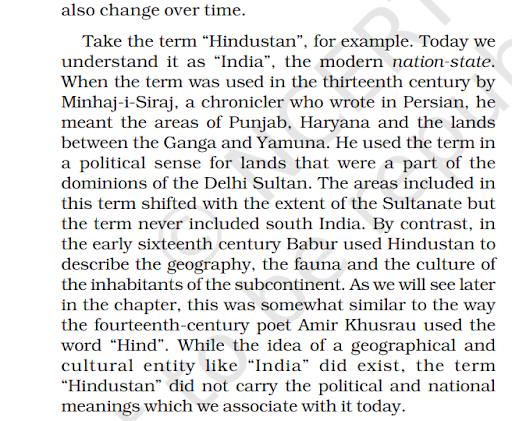 NCERT CLASS 7th pg.3
NCERT CLASS 7th pg.3
An innocent child reading the above conventional historical accounts might easily conclude that the geopolitical entity we now recognize as India was a British creation, a fabrication born from the oft-repeated colonial propaganda that the British united India, and that a truly unified India only became politically viable after 1947. This narrative, perpetuated by anglicized Marxist historians and what one might call anglicized nawabs, has become so entrenched in popular discourse that it overshadows millennia of indigenous understanding of Bharat as a civilizational unity.
But what does the evidence reveal when we examine it through a decolonized lens?
When we turn to indigenous resources—the vast treasury of Sanskrit literature, epics, socio-political treatises, and spiritual texts—a radically different picture emerges. The great epics of the Ramayana and Mahabharata present a conception of Bharatavarsha that extends from the snow-capped Himalayas to the vast expanse of the Indian Ocean. These are not merely literary constructions but reflect a deep-rooted geographical and cultural consciousness that predates colonial intervention by thousands of years.1
The Vishnu Purana, for instance, provides a clear definition:
uttaraṁ yat samudrasya himādreścaiva dakṣiṇam,
varṣaṁ tad Bhāratam nāma Bhāratī yatra santatiḥThe land that lies north of the ocean and south of the Himalayas is called Bharat, where the descendants of Bharata dwell.
This concept appears consistently across the plethora of Puranas, the sophisticated political treatises of Chanakya's Arthashastra, the literary works of Kalidasa, and the philosophical texts of both Jain and Buddhist traditions. These sources reveal not a fragmented collection of disparate territories, but a unified cultural and geographical consciousness that recognized the natural boundaries of what we now call the Indian subcontinent as constituting a single civilizational space.
Remarkably, this indigenous understanding finds corroboration in the accounts of foreign observers across different historical periods. Megasthenes, the Greek ambassador to the Mauryan court in the 4th century BCE, described 'Indica' as a unified geographical and political entity with clearly defined boundaries. His detailed ethnographic and geographical observations consistently treat the subcontinent as a coherent whole rather than a collection of unrelated fragments.
Similarly, Amir Khusrau, the 13th-century Persian poet and scholar, left historical records that acknowledge the southern boundary of the Indian subcontinent as the Indian Ocean, recognizing the natural unity of the landmass. These external testimonies, spanning over a millennium and coming from entirely different cultural backgrounds, independently validate the indigenous conception of Bharatvarsha as a unified geographical and civilizational entity
The Colonial Project of Fragmentation
It was only during the colonial period that a systematic effort emerged to reimagine India as an inherently fragmented space. This was not merely an academic exercise but a calculated political strategy. Colonial missionaries and administrators formed a deliberate nexus to project India as a collection of disparate, naturally divided territories that required British intervention to achieve any semblance of unity.
This colonial construct manifested in various forms: the artificial separation of Tamil from Sanskrit (despite their deep historical connections), the projection of an irreconcilable North-South cultural divide, and the systematic erasure of pan-Indian cultural and political traditions from historical narratives. The goal was clear—to delegitimize any indigenous claim to natural unity and to position British rule as the only viable path to subcontinental integration.
This colonial construct of fragmentation found its way into post-independence educational materials, particularly creeping into NCERT textbooks from 2006 onward. The old NCERT narrative, influenced by what critics call the liberal Marxist system, often reinforced these colonial-era divisions, presenting pre-colonial India as naturally fragmented and portraying British rule as a unifying force.
The recent revisions to NCERT textbooks can thus be understood not as saffronization but as a long-overdue correction—a return to the indigenous understanding of Bharatvarsha that existed for millennia before colonial intervention. By acknowledging the deep-rooted conception of India as a unified civilizational space, these revisions help restore a more authentic historical consciousness.
The question of whether India was created by the British or represents an ancient civilizational unity is not merely academic—it strikes at the heart of how we understand our past and conceive our future. The overwhelming evidence from indigenous sources, corroborated by foreign observers across different periods, establishes that the conception of Bharatvarsha as a unified entity from the Himalayas to the Indian Ocean predates British colonialism by thousands of years.
Recognizing this reality does not diminish the complexity of subcontinental history or ignore regional diversities. Rather, it restores a more complete and authentic understanding of how indigenous traditions conceived of their civilizational space. In Sir Jadunath Sarkar's terms, this represents a return to the true essence and ethos of historical inquiry—one that honors both empirical evidence and the authentic spirit of Bharatiya civilization.
The recent NCERT revisions are not distortions but acts of decolonization—restoring indigenous perspectives to our history. This marks a vital step in reclaiming Bharat’s civilizational identity.
Ancient Foundations: From Ṛgveda to Sapta Sindhu
The new textbooks prominently feature the ṛigved as India's most ancient text, positioning it as the foundational source for understanding the subcontinent's earliest historical consciousness. The books specifically discuss the concept of Sapta Sindhu (the land of seven rivers), which the ṛigveda uses to describe the northwest region of the subcontinent. This term, derived from 'Sindhu', referring to the Indus River, represents one of the earliest geographical designations for Indian territory.
A particularly significant inclusion in the new curriculum is the reference to the Viṣṇu Purāṇa we saw earlier for the name, ‘Bhārat’. This reference is especially noteworthy because it represents a 7,000-year-old textual tradition that defines the geographical and cultural boundaries of Bharatvarsha. The committee responsible for these revisions emphasized that Bhārat is an age-old name that has been consistently used in ancient texts like the Viṣṇu Purāṇa, providing historical legitimacy to the indigenous nomenclature.2
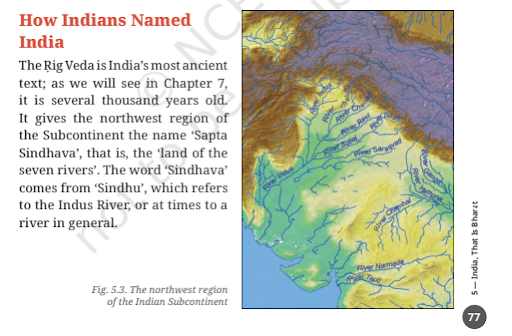
Ancient Texts as Geographic Guides: NCERT's New Approach
India's revised textbooks now use the Mahābhārata as a geographical atlas, helping students connect ancient place names with modern locations. The epic mentions Kashmir (Kaśmīra), Kurukshetra in Haryana, Bengal (Vaṅga), Assam (Prāgjyotiṣa), Kutch (Kacha), and Kerala (Karāla) - names that persist today.3
The texts emphasize two key terms: Bhāratavarṣa (country of the Bharatas) and Jambūdvīpa, both describing the Indian subcontinent. This connects geography directly to Vedic identity from the Rig Veda.
New chapters integrate Hindu, Buddhist, and Jain traditions as unified components of Indian civilization, moving beyond fragmented approaches. The curriculum weaves together sacred rivers and mountains with their cultural significance, reflecting the indigenous view where landscape and identity merge.
Students engage through interactive mapping exercises, connecting ancient names to current geography. This builds understanding of historical continuity across millennia.
The books draw from multiple periods - ṛigveda through Mahābhārata to puranic literature - showing how geographical consciousness evolved while maintaining core concepts. This chronological approach demonstrates continuity rather than rupture.
This shift represents the systematic decolonization of Indian education. Instead of external frameworks that fragmented the subcontinent, these textbooks restore indigenous perspectives on geographical and cultural unity.
The new NCERT approach serves dual purposes: educating students and restoring authentic historical consciousness rooted in civilizational texts rather than colonial interpretations.
Let us now critically appraise the most contentious facets of the three key Mughal emperors: Babur, Akbar, and Aurangzeb, that have been revised in the new NCERT books
The Babur Deception: India's First Colonial Catastrophe
Indian academia has perpetrated history's most egregious fraud: sanitizing Babur from a genocidal invader into a cultured patron. This deliberate distortion, embedded in curricula in previous editions of NCERT textbooks on history, represents civilizational amnesia—calculated erasure of documented atrocities that inaugurated three centuries of systematic destruction.4
Baburnama reads as a psychopath's manual of systematic terror. Babur documents creating victory towers from human heads, 200 Afghan heads at Hangu alone. He boasts of massacring 3,000 Bajaur inhabitants for refusing Islamic conversion. He dispatches severed heads across territories as victory announcements.5
This is not medieval military practice; it is documented genocide, confessed by the perpetrator himself.
The physical evidence is overwhelming. At Ayodhya, multiple lines of evidence establish beyond doubt that Babur demolished the Ram Janmabhoomi temple for his mosque.6
Sambhal's mosque inscriptions brazenly advertise using temple materials—a confession carved in stone.
The pattern spans his territories: Chanderi, Mathura, Kashi. Not isolated destruction but systematic policy designed to erase Hindu civilization from its homeland.7, 8
Guru Nanak's Babar Vani provides eyewitness testimony documenting mass rape, systematic enslavement, and deliberate civilian targeting. These contemporary accounts by religious figures who witnessed the devastation carry the weight of lived experience no theoretical historiography can dismiss.9
The most damning indictment targets modern Indian academia and school education, which systematically concealed this evidence.
When historians minimize documented genocide as military necessity, transform temple destruction into architectural adaptation, reduce systematic enslavement to medieval practice—they become accomplices to historical crimes.
The NCERT's portrayal of Babur as an aesthetic dilettante represents ultimate educational corruption. Generations have been deliberately misinformed about their civilization's foundational trauma—cultural genocide masquerading as scholarship.
Babur's invasion was India's first systematic colonization. His methods—religious persecution, cultural erasure, economic exploitation—provided the template that Mughals refined later and the Europeans inherited.10
The Unbroken Chain of Mughal Terror
Following Babur's foundational blueprint of systematic brutality, every succeeding Mughal emperor perpetuated the same pattern of religious persecution, mass murder, and cultural destruction. From Humayun's campaigns to Shah Jahan's documented atrocities, the Mughal dynasty maintained an unbroken tradition of colonial barbarism against indigenous populations.
However, Akbar and Aurangzeb represent the two extremes of this same fundamentally bigoted spectrum—one masquerading behind false tolerance while practicing systematic debauchery and genocide, the other openly embracing religious fanaticism as state policy. Both ends of this spectrum reveal the same underlying reality: Mughal rule as sustained civilizational assault.
The Great Deception: Akbar's Documented Brutality
Academic historiography has orchestrated one of history’s most effective whitewashes—recasting Akbar, a documented mass murderer, as India’s model of tolerance under the exalted title of ‘The Great’.
The archaeological and textual evidence exposes this fabrication with devastating clarity.
The Chittorgarh Massacre stands as irrefutable testimony to Akbar's genocidal methods. After capturing the fortress in 1568, contemporary sources, including Abul Fazl's Akbarnama, document Akbar's deliberate massacre of 30,000-40,000 unarmed Hindu civilians.11 The systematic nature of this atrocity is revealed through historian James Todd's account of Akbar measuring the killed by weighing their sacred threads—74.5 mann (2,980 kg) of janeu threads. This grotesque accounting method exposes calculated genocide, not military necessity.
Akbar's systematic temple destruction and forced conversions are documented by contemporary historian Monserrate, who recorded how the religious zeal of the Muslims has destroyed all the idol temples. After victories, Akbar proclaimed he had established Islam by destroying the forts of infidels and demolishing their temples, explicitly framing conquest as religious warfare.
The emperor's psychological warfare included constructing towers from severed heads—over 2,000 heads formed such monuments at Ahmedabad alone.12 He dispatched Raja Vikramaditya's severed head to Humayun's harem while parading the torso through Delhi.13
At Thanesar, Akbar arranged mortal combat between Hindu ascetics for entertainment, forcing religious groups to fight to the death.14, 15 Akbar maintained over 5,000 wives in his harems and engaged in systematic sexual exploitation, along with the fact that he was a chronic alcoholic. Like his ancestors, he was described as having uninhibited licentiousness backed by royal brute force, reducing much of India to what one historian termed a vast brothel. This systematic debauchery formed the foundation of his supposed tolerance—a reign of sexual predation masquerading as pluralistic governance.16
Aurangzeb: Institutionalized Religious Terror
Jadunath Sarkar's meticulous documentation in Anecdotes of Aurangzib and Historical Essays reveals Aurangzeb's systematic campaign of religious persecution, unprecedented in Mughal history.
In his four-volume History of Aurangzib, Jadunath Sarkar chronicles the ruthless succession struggle, detailing how Aurangzeb eliminated his brothers to claim the throne. Sarkar notes that Aurangzeb believed he had “no choice,” quoting his brother’s ominous declaration: Ya takht ya tabut!—the throne or the coffin.17
His April 1669 imperial edict, ordering provincial governors to destroy temples and schools of Brahmans... and utterly put down teachings of infidels, represents institutionalized genocide.18
The martyrdom of Guru Tegh Bahadur (1675) exemplifies Aurangzeb's systematic brutality. When the Guru defended persecuted Kashmiri Pandits, Aurangzeb subjected him and his companions to five days of torture.19
Before the Guru's eyes, Bhai Mati Das was sawn alive, Bhai Dayal Das boiled alive, and Bhai Sati Das burnt alive. The Guru's public beheading at Chandni Chowk demonstrated state-sponsored religious terror.
The torture and execution of Chhatrapati Sambhaji Maharaj (1689) reveal Aurangzeb's calculated sadism. After capture, Sambhaji was paraded as a clown while crowds threw stones and dung.20
Refusing conversion and surrender despite 40 days of systematic torture—eyes plucked with red-hot irons, tongue severed, nails extracted, skin gradually removed—Sambhaji was finally torn apart with tiger claws and beheaded.
But this did not deter the Maratha Empire, which fought back with all its might and valour under the capable leadership of Tarabai Rani Saheb. Aurangzeb's brutal execution of Sambhaji ultimately backfired, galvanizing Maratha resistance that would consume the remaining years of his reign. The emperor met his ignominious end in the Deccan after spending his last 26 years (1681-1707) as a failing, disease-ridden monarch, watching his empire crumble under relentless Maratha guerrilla warfare that his brutality had intensified.
Aurangzeb's reimposition of the jizya tax represented systematic religious persecution disguised as fiscal policy. Sarkar's History of Aurangzib, Volume III, definitively establishes that the officially avowed policy was to increase the number of Muslims by putting pressure on the Hindus. Citing Persian chronicles, Maasir-i-Alamgiri and Mirat-i-Ahmedi, Sarkar documents Aurangzeb's explicit motive: to spread the law of Islam and overthrow infidel practices.21
Modern revisionist attempts to sanitize jizya as mere military exemption fees collapse under Sarkar's historical evidence. He definitively refutes this fabrication, noting that the jaziya as a tax on the free exercise of religion was replaced by a tax for exemption from military service only as late as 1855 in European Turkey. Islamic jurisprudence itself confirms the humiliating purpose.
Ibn Kathir's tafsir explicitly states that jizya payment is a sign of kufr and disgrace, designed to ensure infidels ought to be disgraced, humiliated and belittled.
Columbia University's N.P. Aghnides reveals jizya's etymological origin from jaza, meaning recompense or punishment. Classical Hanafi jurists, most revered in India, described jizya not as taxation but as a price for being spared death—a contract for continued existence where one's faith rendered them a tolerated anomaly under Islamic supremacy.22
The Spectrum of Bigoted Fundamentalism
The Akbar-Aurangzeb continuum exposes the fundamental lie of Mughal tolerance. These two emperors represent opposite ends of the same bigoted spectrum—Akbar embodying systematic debauchery disguised as pluralism, Aurangzeb representing open religious fanaticism. Both employed identical methods of persecution, mass murder, and cultural destruction as core governance strategies, differing only in presentation, not substance.
Both rulers used temple destruction as psychological warfare. Both employed mass executions to terrorize populations. Both systematically targeted Hindu religious leadership and cultural institutions. The academic distinction between tolerant Akbar and intolerant Aurangzeb serves only to obscure the systematic nature of Mughal colonial brutality.
Modern historiography's transformation of these documented genocidal maniacs into complex, even admirable figures represents intellectual treason.
When scholars minimize documented massacres as medieval warfare or systematic temple destruction as architectural synthesis, they become accomplices to historical crimes. The evidence is overwhelming and undeniable.
All three reigns of Babur, Akbar, and Aurangzeb represent not the flowering of Indo-Islamic civilization but the systematic destruction of indigenous religious and cultural traditions through state-sponsored terror.
The time for euphemistic historical narratives has ended. The documentary record demands recognition that Mughal rule—from Babur’s Central Asian renaissance to Akbar's tolerance, ending with Aurangzeb's saintly fanaticism—represented sustained colonial brutality, whose trauma continues to distort Indian civilization. Only honest acknowledgment of this systematic barbarism can begin India's process of civilizational recovery from centuries of documented historical lies.
This realization does not come easily—it is forged over years of reading and reflecting on history. Like many, I was once captivated by the grand narratives I encountered as a young student. I accepted the Marxist lens, studied it diligently, even prepared for the Civil Services with it, and eventually taught it as a CSE coach and educator to many unsuspecting youth! I had blindly accepted what I was told.
But with time, I began to uncover a different story, one told by historians who had been sidelined, ignored, or dismissed. Giants like Shri R.C. Majumdar, Sir Jadunath Sarkar, Shri Ram Swarup, and Shri Sita Ram Goel. These were scholars who wrote with intellectual honesty and empirical rigour, not to incite hate, but to awaken courage. They spoke truths often uncomfortable—about our past, not to wound us, but to restore a sense of honour and clarity.
History, I have come to understand, demands that we be satyānveṣis—seekers of truth. If our children are not given the strength, the dṛṣṭi (vision), to confront history in its fullness, including its horrors, they are left with a sugarcoated version that dulls the pain of their ancestors and buries the memory of a civilizational trauma. This fosters not pride but amnesia.
In this context, NCERT's recent curriculum reforms represent more than mere educational updates—they constitute acts of cultural reclamation. By incorporating local historiesand cultural perspectives, these changes help students develop a nuanced understanding of their heritage, including its complex and challenging chapters. When students grasp local cultural contexts, they are better equipped to comprehend and process the darker periods of history with maturity and critical thinking. These reforms offer a pathway toward restoring historical pride and truth that have long been absent from the educational experience of countless young minds, fostering both cultural awareness and intellectual honesty in the next generation.
References
- Atri, Neeraj, and Munieshwar A. Sagar. Brainwashed Republic: India's Controlled Systemic Deracination. Hardcover edition 2019.
- https://kashmirobserver.net/2023/10/25/ncert-for-replacing-india-with-bharat-in-textbooks/
- https://ncert.nic.in/textbook/pdf/fees105.pdf
- https://www.esamskriti.com/e/History/Indian-History/Atrocities-of-Mughal-Emperors-~-Islamic-Imperialism-in-India-Part-2--1.aspx
- https://theindosphere.com/history/mughal-empire-dark-history/
- https://stophindudvesha.org/babars-demolition-of-the-ram-janmbhoomi-temple-complex-the-gloating-muslim-accounts/
- https://theindosphere.com/history/mughal-empire-dark-history/
- https://www.indiatoday.in/india/story/sambhal-violence-riot-up-court-plea-shahi-jama-masjid-kalki-temple-history-explained-asi-report-2639611-2024-11-25
- https://www.mdpi.com/2077-1444/11/7/328/pdf?version=1594695204
- https://www.esamskriti.com/e/History/Indian-History/Atrocities-of-Mughal-Emperors-~-Islamic-Imperialism-in-India-Part-2--1.aspx
- https://www.indiatoday.in/opinion-columns/story/akbar-the-great-mughal-empire-india-opinion-1951260-2022-05-19
- https://www.sanskritimagazine.com/akbar-great-monarch-tyrant/
- https://www.indiatoday.in/opinion-columns/story/akbar-the-great-mughal-empire-india-opinion-1951260-2022-05-19
- https://www.sanskritimagazine.com/akbar-great-monarch-tyrant/
- Vincent Smith describes an extraordinary incident at the Hindu pilgrimage site of Thanesar, where Akbar arranged mortal combat between two groups of Hindu ascetics (Kurs and Puris) for his entertainment, forcing them to fight to the death over a seating dispute
- Vincent Smith in ‘Akbar-The Great Mogul’ (p 81) writes, “Akbar possessed an inordinate lust for women.” One of Akbar's motives during his wars of aggression against various rulers was to appropriate their women, daughters and sisters. It was he who started Meena Bazar to get concubines for his Harem.
- https://www.sikhphilosophy.net/threads/book-review-history-of-aurangzib-by-jadunath-sarkar.36436/
- https://hindupost.in/history/aurangzeb-destroyed-1000s-of-hindu-temples-no-he-never-rebuilt-any/#
- https://storytrails.in/religions/guru-tegh-bahadur-the-martyr/
- https://www.reddit.com/r/IndianHistory/comments/1iw32cr/capture_and_execution_of_chhatrapati_sambhaji/
- https://www.scribd.com/document/827960415/HISTORIOGRAPHY-ON-AURANGZEB
- https://swarajyamag.com/commentary/on-jizyas-truth-what-revisionists-like-ruchika-sharma-wont-admit
